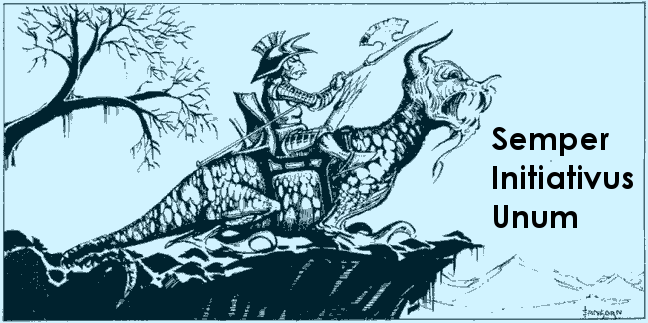Looking through the OD&D spell list, there are some obvious candidates for spells that have been cast weeks, months or years in advance by some wizard, and the PCs are only coming into contact with them now. These are some ideas for spell uses that have been in effect when stocking a dungeon.
Invisibility. This one is pretty obvious. Any person or creature who doesn't attack or touch someone, and any object which is not touched, can be made invisible right up until explorers come through the dungeon. Creatures can hide much better when invisible. But really invisible stuff offers a lot of potential on its own. Magic items and treasure can be hidden in plain sight. An obstacle or trap could be invisible right up until the PCs hit it. This can make caltrops, floor spikes or bear traps quite nasty. A visible gem coated in invisible contact poison - et cetera.
Continual Light. Sometimes just to freak PCs out. For instance, if you want to give them a sign that a room up ahead is really dangerous, maybe have a copper piece or half of a charred staff with Continual Light cast on it as a sign that previous parties have tried and failed. It would also be interesting to have an NPC or monster that had Continual Light cast at its eyes as an offensive spell and is now blind, as was detailed out in Moldvay. Or you could use several applications for an underground greenhouse/garden, perhaps with a human (or inhuman) garden-keeper.
Wizard Lock. This one is fairly obvious, and varies depending on exactly how loose you are in terms of what can be held by a Wizard Lock spell. Good for hiding treasure behind a wizard locked safe or chest.
Polymorph Others. Which is what started this whole train of thought. This is a great way to hide a friendly NPC - for instance, someone could have really been turned into a frog (or cat, or monkey) or even an apparent "monster" type - and it would be permanent. The idea of a fighter turned into a monkey by an evil wizard and hanging about a dungeon trying to get a magic-user to cast Dispel Magic on him is just too funny to me.
Growth of Plants. Combine this with the garden or greenhouse idea in Continual Light for a really nasty vegetation surprise deep down in the dungeon.
Hallucinatory Terrain. This has so much evil potential. For instance, consider a 40'x20' room with Hallucinatory Terrain cast on it to appear like it's a 20'x20' room. Then the PCs touch the wall or door, and all of a sudden the foes on the other side of the false wall appear. It's a great illusion spell because unlike Phantasmal Forces it doesn't stop when you stop concentrating.
Conjure Elemental. Sure, the magic-user has to concentrate to control the elemental. But what if he just wants to leave it in a room otherwise secured against its escape? Maybe the monsters have it as a "In case of PC threat, break glass" room in a dungeon level.
Wall of Stone. Build a maze or just a wall that you and no one else can get through.
Wall of Iron. Like Wall of Stone, but made of iron.
Animate Dead. A bit on the nose.
Feeblemind. Much like the monkey idea but with an idiot wizard. May be willing to share scrolls / spellbooks if the PCs dispel magic on him. (Or combine the two and get an idiot wizard in the form of a monkey.)
Stone to Flesh. Instant statues without any need to pay a pesky sculptor. Obviously a "pet" basilisk or cockatrice, or a friendly medusa, could do this as well.
Reincarnation. Just an interesting background for an NPC, particularly in OD&D where you roll on the alignment table for it. Could be particularly fun if you run it as one of several extreme mismatches from the Neutral column - for instance a pixie that was previously a minotaur, or dwarf who's a reincarnated dragon - or vice versa.

Great list and commentary! I love explorations of the implied world of 0e, and this is very applicable to building dungeons.
ReplyDelete